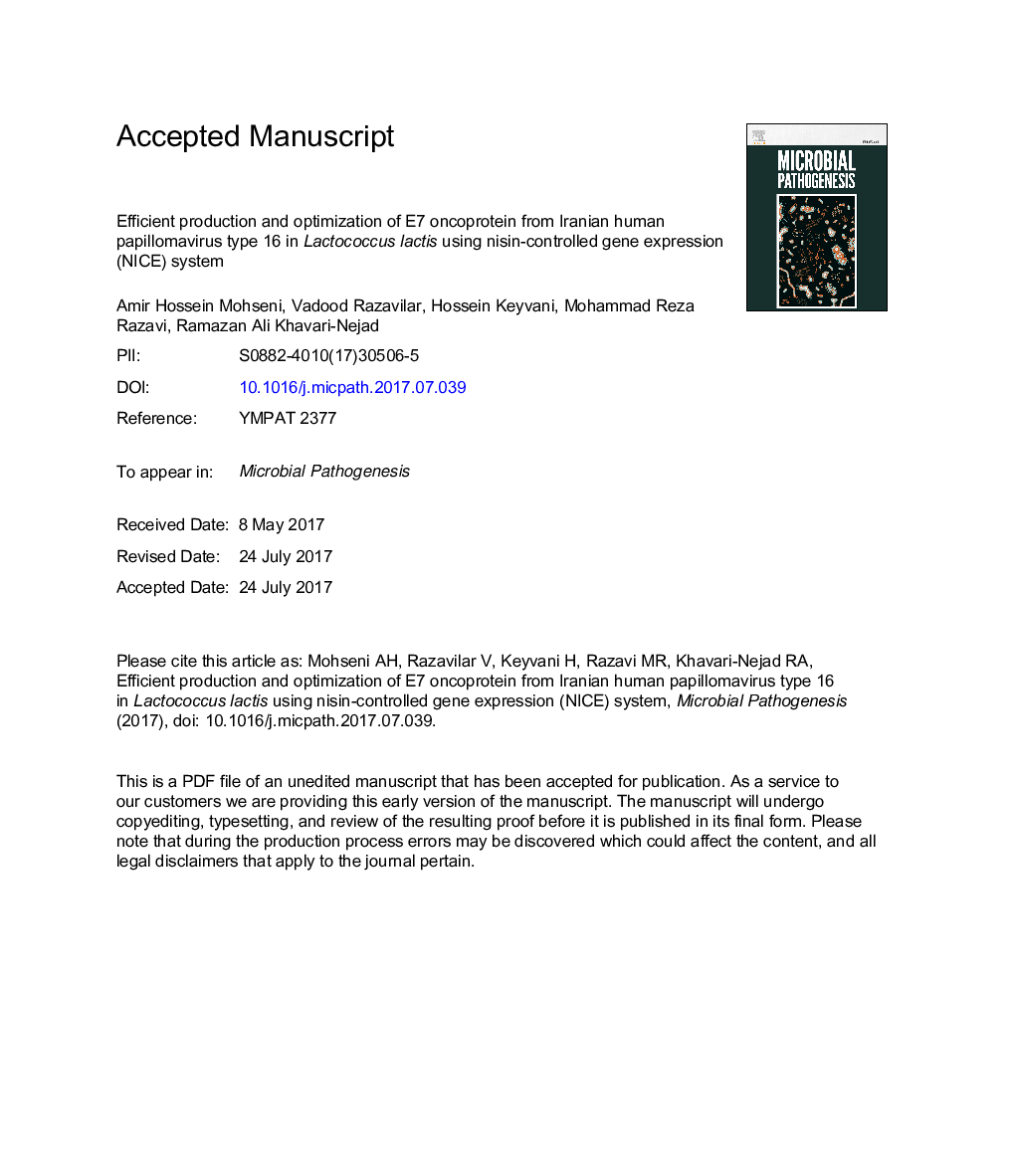| Article ID | Journal | Published Year | Pages | File Type |
|---|---|---|---|---|
| 5673712 | Microbial Pathogenesis | 2017 | 31 Pages |
Abstract
The present work was aimed at investigating the expression and optimization of a human papillomavirus (HPV) type 16 gene encoding oncoprotein E7 in Lactococcus lactis. We genetically engineered Lactococcus lactis using nisin-controlled gene expression (NICE) system pNZ8148 to express the native and codon optimized E7 oncogenes isolated from Iranian HPV-16. The results of optimizing fermentation showed, the concentration of produced protein was expressively improved by 10 ng/mL nisin after 3.5, and 4 h induction for NZ9000 harboring the codon-optimized, and native E7 respectively. Furthermore the recombinant NZ9000 strains expressed rE7 by maximum value of 4.7 (Codon-optimized), and 1.82 μg/mL (Native) in static flask experiments at initial glucose concentrations of 50 and 75 g/L respectively. The rE7 yield was further enriched in batch fermenter experiments using controlled pH. Thus, the overall production of rE7 under optimized conditions accumulated in the cytoplasm to nearly 33.25 μg/mL by L. lactis NZ9000 containing codon-optimized E7, which was over â¼2.7-fold higher compared to the NZ9000 having native E7 strain (12.01 μg/mL). Accordingly, the maximum biomass production was calculated 4.87, and 1.51 g/L respectively.
Related Topics
Life Sciences
Immunology and Microbiology
Microbiology
Authors
Amir Hossein Mohseni, Vadood Razavilar, Hossein Keyvani, Mohammad Reza Razavi, Ramazan Ali Khavari-Nejad,
